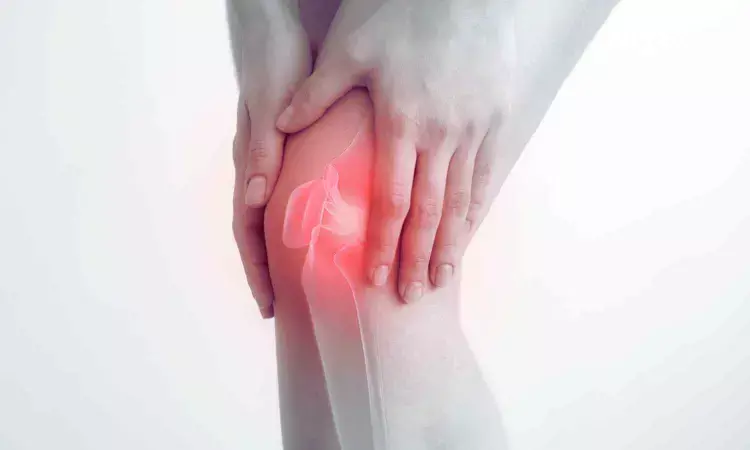- Home
- Medical news & Guidelines
- Anesthesiology
- Cardiology and CTVS
- Critical Care
- Dentistry
- Dermatology
- Diabetes and Endocrinology
- ENT
- Gastroenterology
- Medicine
- Nephrology
- Neurology
- Obstretics-Gynaecology
- Oncology
- Ophthalmology
- Orthopaedics
- Pediatrics-Neonatology
- Psychiatry
- Pulmonology
- Radiology
- Surgery
- Urology
- Laboratory Medicine
- Diet
- Nursing
- Paramedical
- Physiotherapy
- Health news
- Fact Check
- Bone Health Fact Check
- Brain Health Fact Check
- Cancer Related Fact Check
- Child Care Fact Check
- Dental and oral health fact check
- Diabetes and metabolic health fact check
- Diet and Nutrition Fact Check
- Eye and ENT Care Fact Check
- Fitness fact check
- Gut health fact check
- Heart health fact check
- Kidney health fact check
- Medical education fact check
- Men's health fact check
- Respiratory fact check
- Skin and hair care fact check
- Vaccine and Immunization fact check
- Women's health fact check
- AYUSH
- State News
- Andaman and Nicobar Islands
- Andhra Pradesh
- Arunachal Pradesh
- Assam
- Bihar
- Chandigarh
- Chattisgarh
- Dadra and Nagar Haveli
- Daman and Diu
- Delhi
- Goa
- Gujarat
- Haryana
- Himachal Pradesh
- Jammu & Kashmir
- Jharkhand
- Karnataka
- Kerala
- Ladakh
- Lakshadweep
- Madhya Pradesh
- Maharashtra
- Manipur
- Meghalaya
- Mizoram
- Nagaland
- Odisha
- Puducherry
- Punjab
- Rajasthan
- Sikkim
- Tamil Nadu
- Telangana
- Tripura
- Uttar Pradesh
- Uttrakhand
- West Bengal
- Medical Education
- Industry
NEJM Study finds improvement in knee pain with exercise and physical therapy

People with a meniscal tear and osteoarthritis prescribed home exercises with or without physical therapy reported substantial improvements in knee pain, according to a new study led by Mass General Brigham researchers. Participants who had regular visits with a physical therapist over three months, in addition to the home exercise program, reported slightly greater pain relief at the six- and 12-month follow up timepoints than those who had home exercise alone. This additional improvement may have stemmed from the interpersonal aspects of working with the therapist rather than the therapist’s exercise instruction. Results are published in the New England Journal of Medicine.
The Treatment of Meniscal Problems in Osteoarthritis (TeMPO) study was conducted at Brigham and Women’s Hospital (BWH), University at Buffalo, Cleveland Clinic and the University of Pittsburgh. The trial enrolled 879 participants with an average age of 59 years. Participants were randomized to receive home exercise; home exercise and standard in-clinic physical therapy (PT); or home exercise and in-clinic sham PT.
The home exercise program consisted of 25 minutes of lower extremity stretching and strengthening exercises four times per week. Participants received a video and pamphlets to guide them through the home exercises. In the standard and sham PT arms, participants also saw a physical therapist two times a week in the first month, weekly in the second month, and every other week in the third month. Standard PT consisted of muscle stretching and strengthening, manual therapy, and neuromuscular training, while sham PT consisted of sham manual therapy and sham ultrasound.
The investigators did not observe clinically important or statistically significant differences in pain reduction between the groups at three months. However, participants in the standard PT and sham PT groups experienced slightly greater pain improvement at six and twelve months, compared to those who did not see a therapist.
“On average, participants in all groups reported moderately severe pain at the start of the study and much milder pain three, six, and 12 months later,” said lead author Jeffrey Katz, MD, MSc, clinical director of the Orthopaedic and Arthritis Center for Outcomes Research at Brigham and Women’s Hospital, a founding member of the Mass General Brigham healthcare system. “We observed similar improvement in the standard PT and sham PT groups, suggesting that personal interactions with a physical therapist may have been more influential than the physical therapy itself.”
Katz explained that the study was designed to mimic typical one-on-one, half-hour PT sessions offered in the U.S. The findings should be generalized cautiously to settings that employ longer sessions, group sessions, or different visit frequency.
Reference:
Jeffrey N. Katz, Jamie E. Collins, Leslie Bisson, Morgan H. Jones, Faith Selzer, A Randomized Trial of Physical Therapy for Meniscal Tear and Knee Pain, New England Journal of Medicine, DOI: 10.1056/NEJMoa2503385.
Dr Kamal Kant Kohli-MBBS, DTCD- a chest specialist with more than 30 years of practice and a flair for writing clinical articles, Dr Kamal Kant Kohli joined Medical Dialogues as a Chief Editor of Medical News. Besides writing articles, as an editor, he proofreads and verifies all the medical content published on Medical Dialogues including those coming from journals, studies,medical conferences,guidelines etc. Email: drkohli@medicaldialogues.in. Contact no. 011-43720751


